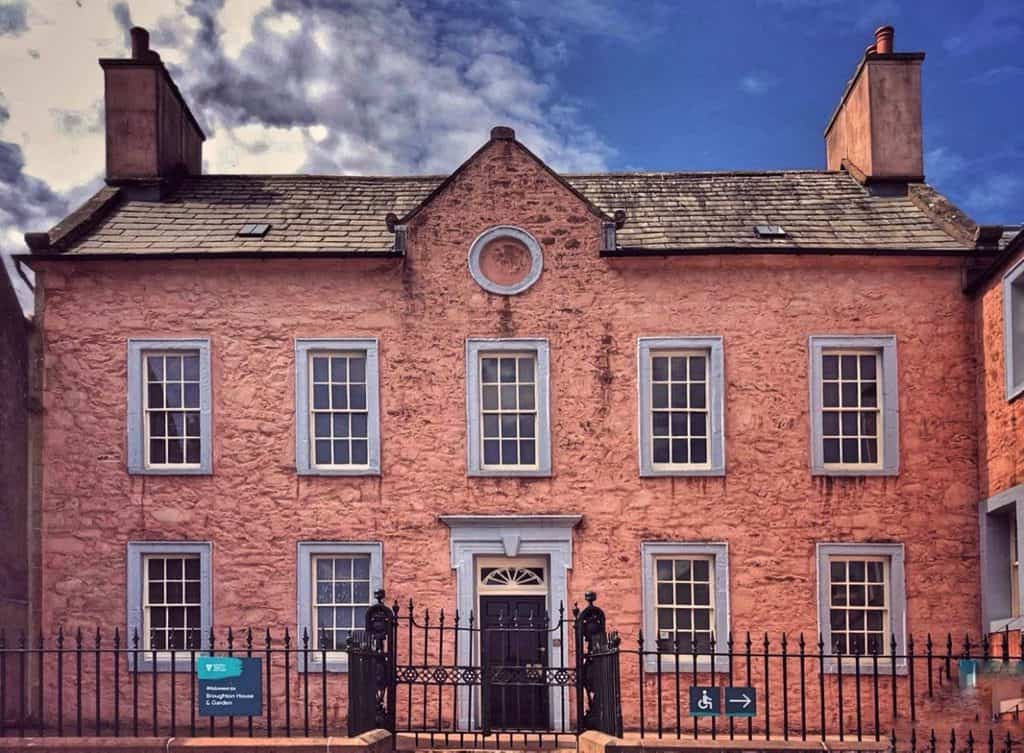Campaigners are appealing to the public to join them in calling on the National Trust for Scotland to reopen the historic Broughton House and Garden and save the jobs of its five staff.
The house was the home of celebrated Scottish colourist E A Hornel (one of the Glasgow Boys), and his sister Elizabeth, from 1901, during a period when the Dumfries & Galloway town became a magnet for artists. Many of them were attracted there because of its famous resident.
The Friends of Broughton House have raised thousands of pounds and provided a huge amount of volunteer work and time to help the NTS maintain the beautiful Kirkcudbright tourist attraction.
But the Friends fear that cost cutting plans by NTS could mean that the staff may be made redundant in early August and the house and garden remain shut, with minimum maintenance, until Spring 2021 or even into 2022.
This is despite the fact that the property was accepted into NTS care with endowments worth between £650,000 and £950,000.
Wing Commander Mike Duguid RAF (Ret’d), who is Chairman of the Friends and has won NTS volunteering awards, believes that these funds should be used to ensure the house reopens this autumn and that the staff are kept in post.
He said: “We have already had more than 300 messages of support from artists, politicians, townsfolk, people working in the tourism sector and many more.
“And now we hope that even more people will call on the NTS to reopen the house and garden – they are absolute gems and take us right into the life and work of a truly great Scottish artist.
“They are also one of the prime visitor attractions of Kirkcudbright, which was loved by generations of artists for its wonderful light and the presence of other creative talents.
“Kirkcudbright is now Scotland’s Artists’ Town and it seems deeply ironic if the home of undoubtedly the most successful artist to live there is not reopened by the NTS. All the more so as this is the precise moment when we should all be pulling together to revive the economy through cultural tourism, on which the town is very reliant.”
The staff have created a plan for the safe opening of the house and garden – something that would contribute to the wider attempts to revive the already fragile economy in Dumfries and Galloway.
Last year the house and garden attracted 18,485 visitors (up from 17,477 in 2018-19) which underlines its importance as one of the town’s main attractions.
The Friends believe that the modest savings from redundancies would be greatly outweighed by the losses to the town and region – especially with the expense of recruiting replacement staff later.
Also concerning is the risk to the Japanese Garden which was designed by Hornel and his sister and requires careful and skilled upkeep. If this does not happen then a living link to the artist, and a valuable part of our cultural heritage, is at risk.
A staff consultation exercise was due to end on 31 July with staff learning their fate on 7 August.
What the NTS says about Broughton House and Garden:
The NTS website emphasises just what an historic gem Broughton House is. The entry (at https://www.nts.org.uk/visit/places/broughton-house) says:
Broughton House & Garden stands in the heart of Kirkcudbright, a historic town and artists’ colony on the Galloway coast. This impressive museum, combining both original interiors and exhibition spaces, is dedicated to E A Hornel’s life and work as an artist, collector and antiquarian.
Hornel – one of the early 20th-century ‘Glasgow Boys’ – bought this impressive building in 1901 and transformed it into his studio and salesroom as well as his home. Hornel was a colourist with an eye for sensual detail – many of his works hang in the house alongside those of his contemporaries. He was also an avid collector: his vast library and archive – regularly used by visiting scholars – includes one of the world’s largest collections of works by Robert Burns as well as rare documents on Galloway’s rich history. His gallery, constructed in 1910, with its ornate fireplace and Parthenon frieze (inspired by the Elgin Marbles), is one of the finest rooms in south-west Scotland.
Outside, Hornel and his sister designed a beautiful garden, with sweeping views over Kirkcudbright harbour and the River Dee. This mature garden is now a gentle labyrinth of stepping stones, wisteria-covered paths and Edwardian charm.






